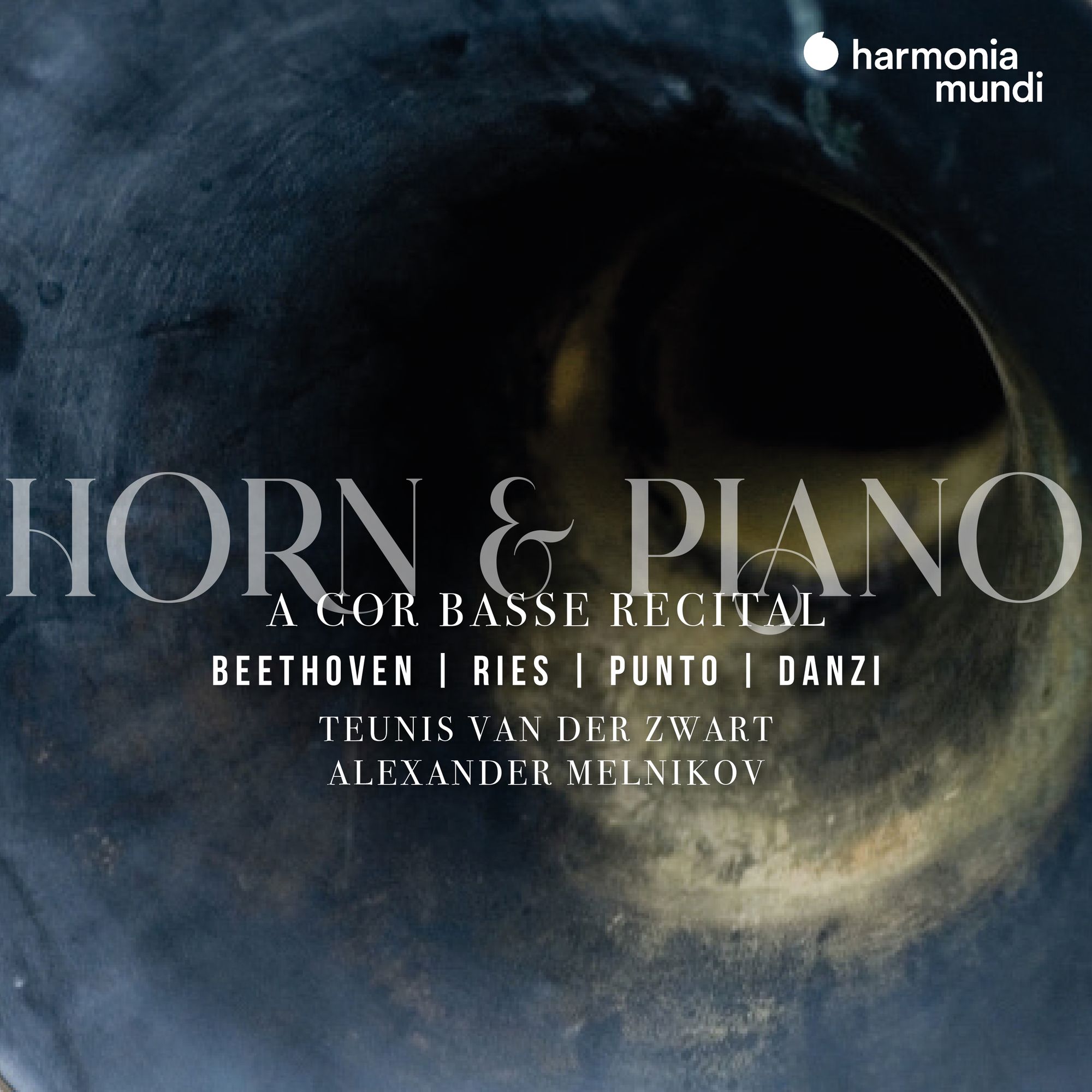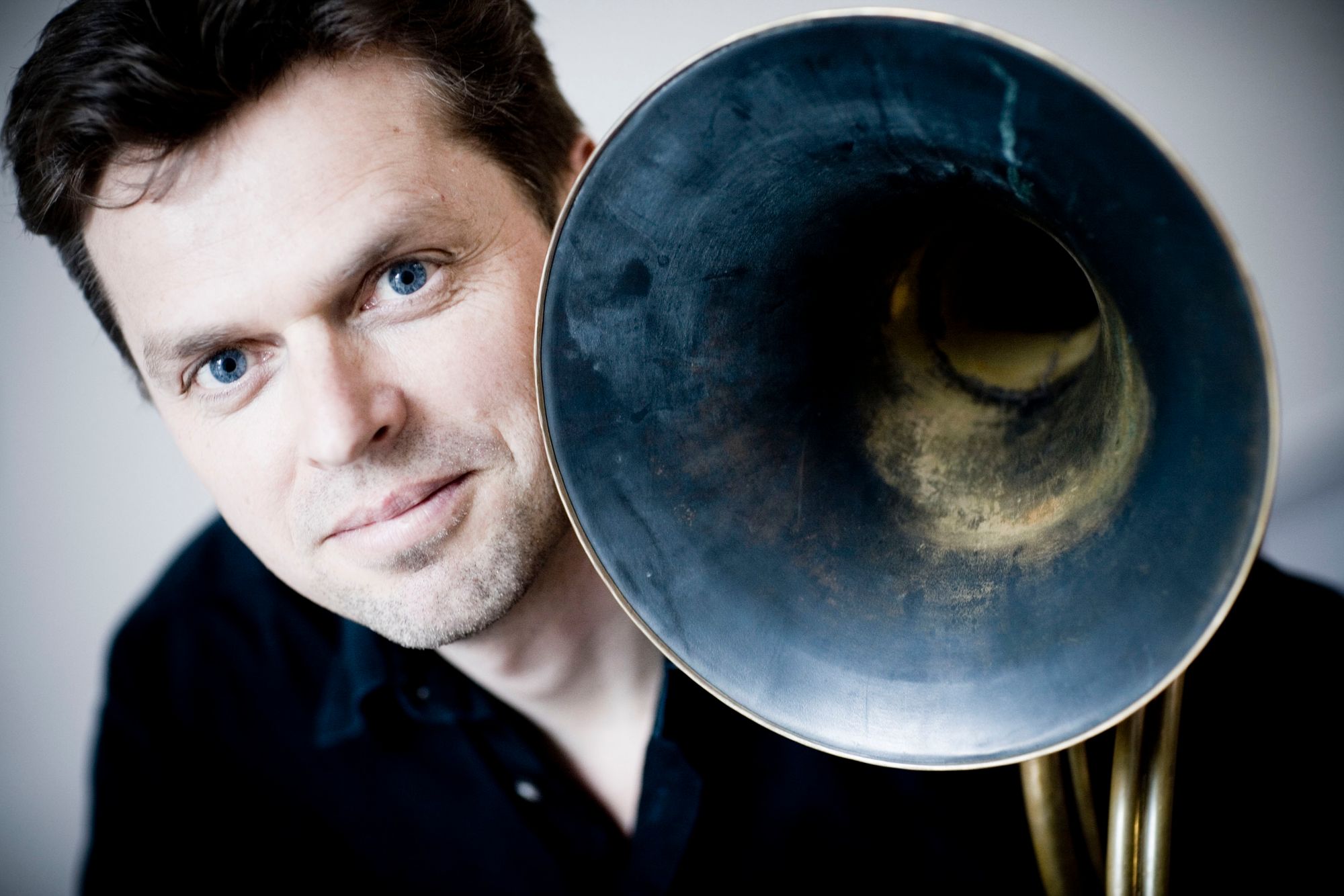Cor basse: A Low Horn and Piano Recital

"Cor basse" - low horn. In this enterprising recital issued by Harmonia Mundi, Teunis van der Zwart and Alexander Melnikov play on authentic instriments, offering a tribute to Giovanni Punto (1746-1803), a player described un the promotional material as "now unknown". As recently as at least my living memory (it was one of my Christmas presents as a young teenager!) Barry Tuckwell recorded a selection of Punto concertos (there are 16 in total!) - the music did indeed generally occupy the mid-low registers of the horn and all I remember was how raucous Tuckwell's playing was!
van der Zwart uses a specifically low horn mouthpiece, which is 19mm in diameter, 2mm wider than the "normal" mouthpiece can der Swart had been playing for decades. The extra diameter akes teh sound "more velvet and penetrating". He is, he says, on a "quest for the well-nigh forgotten sounds of the cor basse"
The disc comes out of van der Zwart's doctoral research into Punto's sound and technique (Giovanni Punto was actually born Jan Václav Stích). The Beethoven is a staple of the horn repertoire. It's an early work with a sliver of a slow movement, but how magnificent are the outer panels!
van der Zwert and his pianist Melnikov both add decorations to the exposition repeat (the first bit) of the first movement, an unexpected and delightful move:
You can hear the natural horn component in the stopped notes (where the player closes the right hand - the note that comes out is a semitone higher than played). Listen to a more "traditional" (pre-historically-inroemed performance) to hear how there is less ornamnentation and, on a valved instrument, no reason for that beautifully colourful stopping. We might as well go to the best. Here's Dennis Brain, with Dennis Matthews:
Listen, perhaps, to how the natural horn stoppings add colour to what are simply downward arpeggiations in the development. The way van der Zwert and Melnikov arrive at the recapitulation (when we hear the opening again, unadorned this time) is really satisfying, musically. The finale, too, is a triumph of virtuosity from both (the piano part is not easy at all!). Melnikov plays on an Alois Graff fortepiano (c. 1830) restored by Edwin Beunk for the Beethoven, the Punto and the Danzi, and a Christoph Kern fortepiano after a 1796 Walter for the Ries.
van der Zwart tackles the question of embellishment in his booklet notes, citing Reicha, Leopold Mozart (Mozart père), C. P. E. Bach and Joachim Quantz in realtion to imrpovised ornamentation as well as the Seule et Vraie Méthode (Only and True Method) horn method of Louis-François Dauprat (1781-1868) as a source that not only provides examples, but also warns agains excessive use. He also brings in teh subject of mulitophoncs (playing two notes at the same time by singing one through the instrument and playing the other), something most (in)famously notated in Weber's Concertino, something van der Zwart considers was used specifically for solo cadenzas.

Even less well known than the Beethoven is the sonata by Ferdinand Ries (1784-1838). It is more Romantic in nature - dreamy, even, in the first movement:
The slow movement is truly revelatory in the colour can der Zwart finds, as well as in one particular slur over a large interval where he deliberately catches harmonics in between, to great expressive effect (it is mislabelled in the YouTube as the third movement):
The Ries was written in 1811 - a superbly well-balanced, inventive piece well worthy of resurrection.
We do hear a concerto (in E major) by Punto, but in a transcription for horn and piano by Melnikov. While we might pine for an orchestra in the first movement, the central Adagio emerges as a song in its own right:
.. and no dounting the hunting origins of the final "Rondeau à la chasse":
Finally, a Horn Sonata by Franz Danzi (1763-1826), a name well known not only to horn players, but to wind players in general. One can hear right form the beginning this was writen for Cor basse:
Again, the combination of van der Zwart's fine, solid playing and Melnikov's ease with figuration is a joy. The central Larghetto finds the horn singing a melody with stopped notes adding much colour. van der Zwart is notably sensitive in his phrasing in this movement:
The closing Allegretto is no hiunting extravaganza. Instead, the lightly tripping theme is given on fortepiano against horn sustained notes; the horn arpeggiations come as a bit of virtuoso fun before the horn takes the melody (and what control van der Zwar has on those long notes):
At the time of writing, this disc is reduced on Amazon at the link below.
